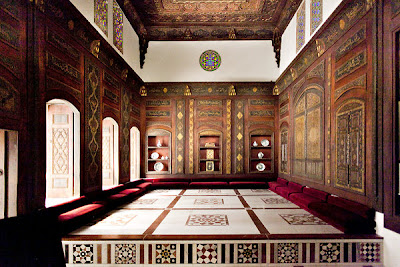 A 14th-century prayer niche, or mihrab, from a theological school in Isfahan, Iran. (Photo by Piotr Redlinski for The New York Times)
A 14th-century prayer niche, or mihrab, from a theological school in Isfahan, Iran. (Photo by Piotr Redlinski for The New York Times)Placing Islamic Art on a New Pedestal
Over the last three years in a suite of galleries concealed from public view on the second floor of the Metropolitan Museum of Art, it is as if Irving’s fable of Islam’s rich past has been unfolding in reverse. Treasures, in this case more than a thousand pieces from the museum’s extensive holdings of Islamic art, have been slowly populating newly constructed rooms, taking their places in gleaming new vitrines with Egyptian marble underfoot and mosque lamps overhead, amid burbling fountains and peaked arches framing views of 13 centuries of art history.
When this 19,000-square-foot hidden chamber is finally opened to the public on Nov. 1 with the unwieldy but academically precise new name of the Galleries for the Art of the Arab Lands, Turkey, Iran, Central Asia and Later South Asia, it will not only represent the culmination of eight years of planning and work. The reinstallation and enlargement of the collection — one of the most important outside the Middle East — also promises to stand as a watershed moment in America’s awareness of the visual culture of the Islamic world, at a time when...READ MORE
 Mechthild Baumeister, right, a conservator, with Daniel Olson, a carpenter, in the new galleries.
Mechthild Baumeister, right, a conservator, with Daniel Olson, a carpenter, in the new galleries.

No comments:
Post a Comment